What are the Different Types of Cars?
A look at the roads will tell you how many different car brands and models are available out there. Despite all these options, you should also note that there are only roughly 30 main vehicle body types. In this article, we will look at these body types and learn how to recognize them and a little about their history.
Sedan
Considered the most common car body type, the sedan is a four-door vehicle with the traditional trunk style. It is differentiated from the hatchback because it doesn’t have a window in the rear luggage compartment and the hinges to the trunk lid are mounted below the rear window.
Sedans generally have limited trunk space but are considered to have a more sporty appearance as a result. In 1912 the Studebaker Four and Studebaker Six models were referred to as sedans although technically they were not what we would term a sedan by today's standards.
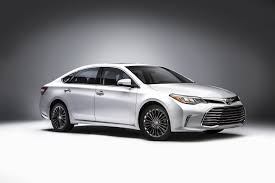
It was in 1913 that the Hudson Motor Company introduced the first Sedan type car at a motor show. This would be the first with a standard three-box design which all sedans subsequently have adhered to on the most basic level.
Examples of the sedan type include:
- Dodge Charger
- Toyota Avalon
- Nissan Altima
- Toyota Camry
- Honda Civic
Crossover
Crossovers at a glance are often confused with SUV-type vehicles with the main differences being more internal than external. Often 2-wheel drive in nature, they sometimes offer 4-wheel drive as well. They have an off-road car chassis like the more rugged SUV but have elements that make them suitable for city driving as well.
The big difference between an SUV and a crossover is the chassis' construction. The crossover has a lighter frame than an SUV in fact it is more akin to a normal road car. In many ways, a crossover is a mixture between an SUV and a hatchback-style car.
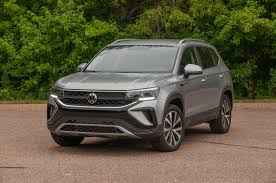
Before the terms crossover and SUV came into common parlance the first vehicle that we would consider as being a crossover was the AMC Eagle. Released in 1979 it was like many passenger cars of the era but offered four-wheel drive.
Examples of crossovers include:
- Volkswagen Taos
- Chevrolet Trailblazer
- BMW X-1
- Acura RDX
Sports Utility Vehicle (SUV)
Another very popular car type is the SUV which is essentially a large car that can carry 5 – 7 passengers with up to three rows of seats. They are most often four-wheel drive and are designed for more rugged terrain than the average road car.
Predating the SUV term, the earliest example of a Sports Utility Vehicle is likely the Chevrolet Carryall Suburban released in 1933. Based on an existing Chevy road car it was designed a little more ruggedly and to transport more people.
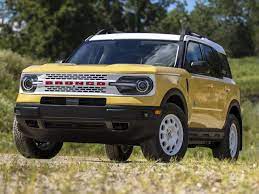
Examples of SUVs Include:
- Ford Bronco Sport
- Genesis GV70
- Kia Soul
- Hyundai Kona
- Mazda CX-30
Hatchback
The hatchback is essentially a mix between the sedan and the station wagon body types, Considered a five-door style vehicle including the trunk, the hatchback has hinges above the rear window like a station wagon. Smaller than a station wagon however the hatchback also usually has a tailgate that is not as steep as those found on station wagons.

The 1938 Citroën Traction Avant 11CV Commerciale is considered by many to be the first example of a hatchback-type vehicle. Designed for families and workers with cargo it offered unique trunk access. Others argue though that the 1965 Renault 16 was the first true hatchback.
Examples of hatchbacks include:
- Audi A7
- Tesla Model S
- Kia Stinger
- Chevrolet Spark
- Honda Civic
Station Wagon
Resembling a sedan for most of its length, the station wagon differs once you reach the rear end of the vehicle. It has an extended roofline and then it has a hatch door rather than the trunk found on sedans. This allows it to offer more cargo space than sedans.
The earliest station wagons as the name suggests were used around train depots and were referred to as “carryalls.” In 1910 independent manufacturers started to add custom wooden bodies to the Ford Model T chassis, thus creating the station wagon.
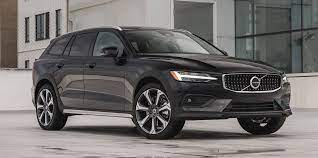
Examples of station wagons include:
- Subaru Outback
- Audi A4 Allroad
- Volvo V60
Coupe
In many ways, coupe-type vehicles are like sedans but they only have two doors compared to four. This means that if the coupe has rear seating available then you will likely have to fold the front seats forward to access them.
Usually designed to look more sporty and sleek than sedans, they are not really great as family cars. Theoretically, in some coupes, you can fit five people but the rear seat does not offer much space and there is limited trunk capacity.
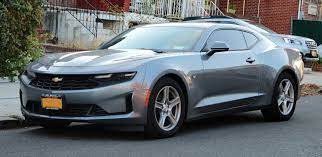
The basic coupe concept comes from 18th-century small horse-drawn carriages that only had front-facing seats. This design later appeared in automobiles in around 1910 and has persisted ever since.
Examples of coupe cars include:
- Ford Mustang
- Chevrolet Camaro
- Dodge Challenger
- Porsche 911
- Toyota Supra
Pickup Truck
The pickup truck body type has become increasingly popular and is very recognizable. An enclosed cab with an often open truck bed the design is simple. Usually rugged in nature and built to carry substantial loads they can vary in size and might be two or four-wheel drive.
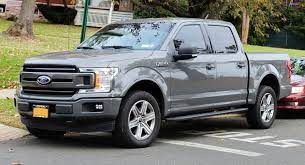
One of the earliest pickup trucks came along in 1913 when the Galion Allsteel Body Company started to build and install hauling boxes that could be affixed to the Ford Model T chassis.
Examples of pickup trucks include:
- Toyota Hilux
- Chevrolet Silverado
- Ford F150
- Nissan Navara
Minivan
Also known as a Multi-Purpose Vehicle, the minivan is a large automobile that trades cargo space for passenger seats. These vehicles can often carry up to 7 – 8 individuals making it a great family vehicle. Designed with ample cabin space they often have a sliding side door on both sides of the vehicle.
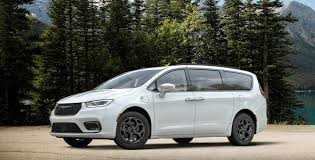
It was Chrysler who in the late 1970s started to work on a van-type vehicle that handled more like a car. The resultant models included the 1984 Plymouth Voyager and the Dodge Caravan.
Examples of minivans include:
- Toyota Sienna
- Chrysler Pacifica
- Ford Transit Connect
- Honda Odyssey
Roadster
The roadster type car is quintessentially a sporty type usually lacking rear seats, often convertible, and of course just having two doors. These roadsters have very limited cargo space and are definitely for recreational over practical driving needs.
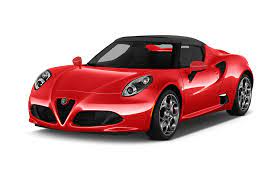
Roadsters find their origins in the first motor races dating back to the 1890s. In an effort to get more speed, vehicles were stripped down to the bare minimum. This concept carried through to road cars with versions of the Model T and Austin 7 being created in a roadster fashion.
Examples of Roadsters include:
- Alfa Romeo 4C Spider
- Mercedes-Benz SLC
- Jaguar F-Type Roadster
Van
This is a more utility vehicle generally used to carry mid-sized loads with an enclosed cargo area. Usually have three seats at the front and no windows along the side of the cabin compartment.
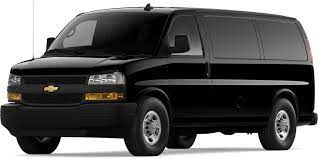
As far back as the 1890s there were models released that were van-like but not quite what we know to be a van today. It was actually during the 1950s and 1960s that manufacturers started to turn out vans as we would recognize them today.
Examples of vans:
- GMC Vandura
- Chevrolet Van
- Volkswagen Transporter
Super Car
Supercars are extremely high-performance vehicles that have been designed for speed and power. They are usually very expensive, generally two-seater, lack decent cargo space but are very fast.

It is thought that the 1966 Lamborghini Miura was likely the very first supercar. By the 1980s supercars were a major business with multiple luxury car manufacturers battling for the most market share.
Examples of super cars:
- Lamborghini Huracan
- Mclaren 720S
- Lamborghini Aventador
Muscle Cars
The muscle car is considered an American icon and usually refers to vehicles containing powerful V8 and V10 engines. They may be powerful but their speed around corners is poor so they are certainly not race cars.

It is widely thought the very first muscle car was the 1949 Oldsmobile Rocket 88. This car did have a racing pedigree however in the world of NASCAR.
Examples of muscle cars include:
- Ford Mustang
- Pontiac GTO
- Dodge Challenger
Micro Cars
As the name suggests these microcars are very small vehicles that have been designed to be compact. The engine size is often less than a liter and they are extremely lightweight. Perfect for getting through city traffic their small size also makes them economical on fuel.

Following WW II motorcycles were popular but they were not great when it was raining. This led to the creation of small cars which in many ways were like motorcycles but obviously had at least one more wheel and an enclosed cabin.
Examples of microcars include:
- Bicycle cars
- Bubble Cars
- Tata Nano
Camper Van
Usually built on Truck chassis, camper van mobile homes often have a kitchen as well as bathroom facilities to go along with the sleeping areas.

Horse-drawn caravans have been around for centuries but motorized versions have only been around since the early 1900s. Today there are non powered versions that are towed as well as various sizes of campers that are both accommodation and transport in one.
Examples of camper vans include:
- Fiat Ducato
- Nomad Vanz Sprinter
- Winnebago Revel
Mini Truck
Not quite a truck but not exactly a pickup truck, these mini trucks are a hybrid of the two. They often can seat three in the cab and feature an open cargo space in the rear although this can be covered as well.

Usually built on a truck chassis they are often very heavy duty so they can carry big loads. The earliest mini trucks were built in Japan in the mid-1950s with them making their way over to the U.S. market around 1959.
Limousine
This car type is actually more of an adaptation as limousines are not really manufactured commercially. They are usually created from an existing vehicle and modified to be longer. Known as luxury vehicles favored by celebrities they are not likely to be anyone’s day-to-day vehicle.

Historically the concept of the limousine is a separation between passenger and driver. Old carriages had the coachman sitting outside driving the horses while the often rich passenger sat inside in comfort. This is how the early limousines were also configured.
Conclusion
There are several different categories of cars on the market each has dozens of models to choose from. Subtle differences between these vehicles can be the deciding factor in choosing a sedan over a hatchback or a pickup truck instead of a mini truck.
Link To or Reference This Page
We spend a lot of time collecting, cleaning, merging, and formatting the data that is shown on the site to be as useful to you as possible.
If you found the data or information on this page useful in your research, please use the tool below to properly cite or reference Tow Ratings as the source. We appreciate your support!
-
<a href="http://towratings.net/blog/what-are-the-different-types-of-cars/">What are the Different Types of Cars?</a>
-
"What are the Different Types of Cars?". Tow Ratings. Accessed on July 27, 2024. http://towratings.net/blog/what-are-the-different-types-of-cars/.
-
"What are the Different Types of Cars?". Tow Ratings, http://towratings.net/blog/what-are-the-different-types-of-cars/. Accessed 27 July, 2024
-
What are the Different Types of Cars?. Tow Ratings. Retrieved from http://towratings.net/blog/what-are-the-different-types-of-cars/.